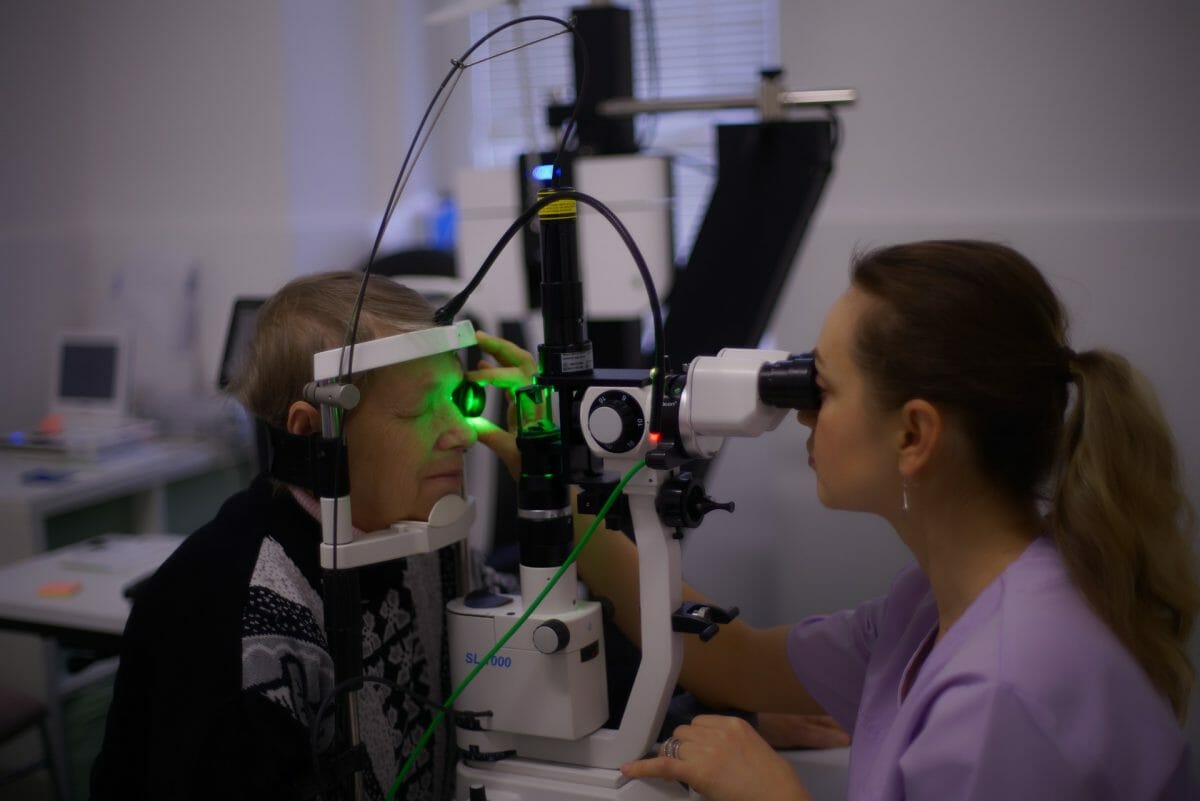Cataracts cloud a person’s clear lens on their eye. It is like looking through a frosted or fogged-up window. Cataracts may not seem serious, but they can cause a person to find it difficult to read or drive a car. In addition, they develop slowly, so many people do not realize they have them until it begins affecting their daily lives. That is why it is crucial to learn the symptoms, causes, types, risks, and prevention of cataracts.
Symptoms
In the beginning stages of a cataract, a person may notice cloudiness in their vision, but it may only affect a small portion of their eye, so they are unaware of it. Cloudy vision is the main symptom, but many other symptoms are signs that a person may have a cataract.
These symptoms include increased difficulty with their vision at night, sensitivity to light, or seeing halos around lights. They may also find that they need a brighter light to read, their eyeglass prescription is constantly changing, and there may be double vision in one eye. Again, these symptoms may not appear serious immediately, but as time goes on, they will become more evident. If any of these symptoms occur, it is crucial to see an eye doctor and get retinal imaging to determine if there is a cataract.
Causes and Risks
What causes cataracts? Most of the time, they develop after an injury or a person’s age, causing a change in the tissue that makes up the eye’s lens. These fibers and proteins start to break down, which is what causes a person’s vision to become cloudy.
There is also the chance that a specific genetic disorder that causes other health problems can give a person a higher chance of forming cataracts. In addition, those with other eye conditions, past eye surgery, long-term use of steroids, or diabetes may also be prone to cataracts.
A person’s risk of getting cataracts increases through a variety of factors. These include things such as if a person is a smoker or is obese, or has high blood pressure. As a result, they are at more risk of developing cataracts. They are also more at risk if they drink excessive alcohol and are constantly exposed to sunlight.
Types
There are four different types of cataracts a person can get. The first is called a nuclear cataract, which affects the center of the lens. This type first appears as nearsightedness for a person and may temporarily improve their reading vision. But as time goes on, the eye’s lens will turn a dense yellow color, clouding the vision.
The second type is a cortical cataract, which affects only the edges of the eye’s lens. It starts as a whitish, wedge-shaped murkiness and eventually extends to the center of the lens and causes issues with light passing through.
The third type is called posterior subcapsular cataracts, which affects the back of the lens. Like with the other types, it starts small. However, a filmy area first forms in the back of the lens, directly in the light path. This cataract hinders a person’s reading vision and lowers their vision in bright light. They also tend to advance faster than the other types.
The fourth and final cataract type is a congenital cataract that people are born with. Some people are born or develop cataracts in their childhood. These can be genetic or are associated with an infection or trauma to the eye. They do not always affect vision, but if they do, they can be removed soon after they are diagnosed. Other conditions can cause congenital cataracts, such as myotonic dystrophy, galactosemia, neurofibromatosis type 2, or rubella.
Prevention
Even though there has not been any conclusive study was done that entirely prevents or slows the development of cataracts, there are a few things a person can do that can help.
The first thing is to make sure to have regular eye exams. This way, a cataract or other eye problems can be detected early on. A person should also quit smoking and reduce their alcohol consumption. Wearing sunglasses can also help prevent cataracts since the ultraviolet light from the sun may cause cataracts. It is also helpful if a person focuses on eating more fruits and vegetables since that way, they get a variety of vitamins and nutrients that help maintain eye health.
If anyone suspects they have a cataract, it is imperative to see a doctor immediately. Thankfully, removing a cataract is a safe and effective procedure.
